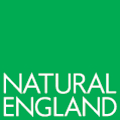Submitted by Ms. Jacky Chaplow on
A recently published study by Heys et al. used sparrowhawk brains from the PBMS tissue archive to investigate whether changes in lipid and protein structure in the brain was correlated with organochlorine (OC) concentrations in the same tissue. The study demonstrated that brain OC concentrations greater than 7.18 µg/g wet wt. may lead to cerebral amyloid aggregation - a characteristic of Alzheimers’ disease. If predatory birds develop amyloid aggregations and suffer synaptic loss, as has been demonstrated in humans, this could affect navigation and hunting behaviors, which require spatial cognition.
The paper can be downloaded from here.
Heys, K. A., Shore, R. F., Pereira, M. G. & Martin, F. L. 2017. Levels of Organochlorine Pesticides Are Associated with Amyloid Aggregation in Apex Avian Brains. Environ Sci Technol, 51, 8672-8681






